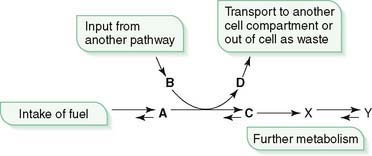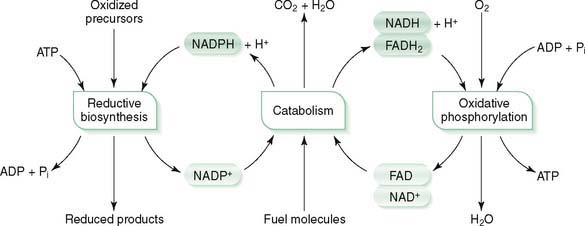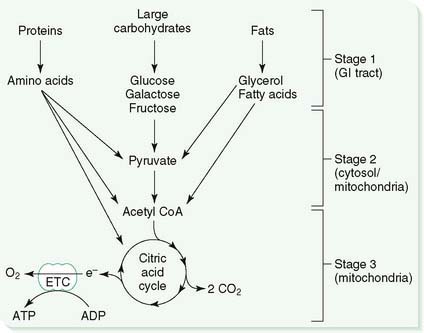Chapter 5 Generation of Energy from Dietary Fuels
I. Energetics of Metabolic Pathways
A. Overview
1. Free energy change (ΔG) for a biochemical reaction indicates its tendency to proceed and the amount of free energy it will release or require.
B. Change in free energy (ΔG)
1. A decrease in free energy for a biochemical reaction, or sequence of reactions, indicates its tendency to proceed.
2. The amount of decrease in free energy in kcal/mole is the amount of free energy a reaction will release or require.
C. Coupled reactions
D. ATP-ADP cycle (Fig. 5-2)
II. Introduction to Intermediary Metabolism
A. Overview
1. Catabolism of foodstuffs to generate ATP occurs in three stages: digestion to small components, formation of acetyl CoA, and oxidation of acetyl CoA in the citric acid cycle (CAC).
B. Catabolic stages (Fig. 5-4).
1. Breakdown of large dietary constituents (i.e., carbohydrates, fats, and proteins) to their small building blocks by digestive enzymes
2. Formation of acetyl CoA by degradation of the products of digestion (e.g., glucose, fatty acids, glycerol, and amino acids)
D. Five common perspectives for many metabolic pathways
5. Clinical relevance



 X) proceeds spontaneously in a forward direction if the sum of ΔG values of the individual reactions is negative.
X) proceeds spontaneously in a forward direction if the sum of ΔG values of the individual reactions is negative.





